Home>Dining>Tableware>Where To Place Wine Glasses In A Dishwasher
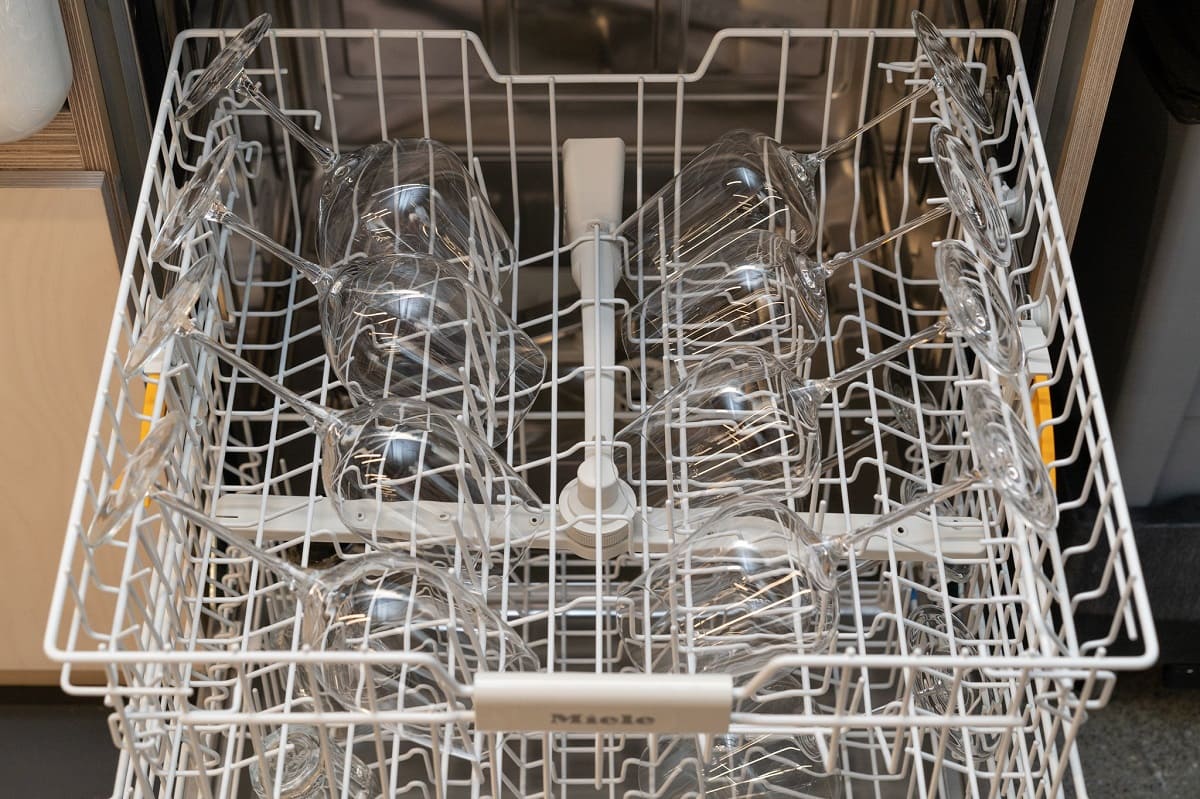

Tableware
Where To Place Wine Glasses In A Dishwasher
Modified: April 23, 2024
Discover the ideal placement for your tableware, including wine glasses, in the dishwasher. Keep your glassware safe and sparkling with these expert tips.
(Many of the links in this article redirect to a specific reviewed product. Your purchase of these products through affiliate links helps to generate commission for Storables.com, at no extra cost. Learn more)
Introduction
Welcome to our guide on where to place wine glasses in a dishwasher! Washing delicate wine glasses can be a daunting task, but with the right knowledge and techniques, you can ensure that your glasses come out sparkling clean without any damage. While hand-washing has traditionally been the preferred method for cleaning glassware, modern dishwashers offer convenience and efficiency for those busy individuals who enjoy a glass of wine after a long day.
However, placing wine glasses in a dishwasher can be a bit tricky due to their fragile nature. The high water pressure, heat, and motion inside the dishwasher can potentially cause the glasses to break or become scratched. To avoid any mishaps and keep your wine glasses in pristine condition, it’s important to understand the factors to consider before placing them in a dishwasher.
In this article, we will explore the factors you should consider, as well as the different placement options and techniques to ensure the safe and effective cleaning of your wine glasses. Let’s dive in!
Key Takeaways:
- Safely place wine glasses in the dishwasher by considering glass quality, dishwasher settings, proper loading, detergent, and water hardness. Top rack placement and dishwasher accessories offer added protection.
- If hand-washing, use gentle techniques to maintain wine glasses’ beauty. Consider alternative methods like steam cleaning or vinegar soak for delicate or antique glasses. Always handle with care.
Factors to Consider Before Placing Wine Glasses in a Dishwasher
Before placing your wine glasses in a dishwasher, there are several important factors to consider. These factors will help you determine whether it is safe to wash your glasses in the dishwasher or if you should opt for hand-washing instead. Let’s take a closer look at these factors:
- Glass Quality: The quality of your wine glasses plays a significant role in determining whether they can withstand the dishwasher’s harsh environment. Cheap or thin glasses are more prone to cracking or shattering under the dishwasher’s high water pressure and heat. Crystal glasses, while elegant and delicate, are generally not suitable for dishwashers due to their sensitivity to extreme temperatures and chemicals in dishwasher detergents.
- Dishwasher Settings: Familiarize yourself with the settings on your dishwasher. Some dishwashers have specialized programs or settings designed specifically for glassware. Look for options such as delicate or glassware cycles, which use lower water pressure and reduced heat to minimize the risk of damage.
- Proper Loading: How you load your wine glasses in the dishwasher can greatly impact their safety. Make sure to space the glasses apart to avoid any direct contact or rubbing against each other during the washing cycle. Additionally, ensure that the glasses are securely positioned and not leaning or touching any other dishes or utensils that could potentially cause damage.
- Dishwasher Detergent: The type of detergent you use in your dishwasher can also have an impact on your wine glasses. Avoid using harsh detergents that contain phosphates or bleach, as these can cause etching, cloudiness, or discoloration on the glasses. Instead, opt for mild, eco-friendly dishwasher detergents specifically formulated for delicate glassware.
- Water Hardness: The hardness of your water can affect the cleanliness and appearance of your wine glasses. Hard water contains high levels of minerals, which can lead to spots or film residue on the glasses after washing. To minimize this, consider using a rinse aid or adding vinegar to the dishwasher to help with water softening.
By taking these factors into account, you can determine whether your wine glasses are suitable for dishwasher cleaning and mitigate any potential risks of damage. Remember, if you have any doubts about the suitability of your wine glasses for the dishwasher, it’s always best to err on the side of caution and wash them by hand.
Top Rack Placement
Placing wine glasses on the top rack of the dishwasher is generally the safest option. The top rack is usually designated for delicate items and is further away from the heating element at the bottom, reducing the risk of excessive heat exposure. Here are some tips for properly placing your wine glasses on the top rack:
- Positioning: Before loading your wine glasses, make sure to position them upside down. This ensures that the rims of the glasses are protected and less susceptible to any potential damage during the washing cycle.
- Spacing: Allow sufficient spacing between the glasses to avoid any contact and potential damage. Overcrowding the top rack can increase the risk of glasses tipping over or clinking together, leading to scratches or breakage.
- Securing: Use the dishwasher’s prongs or racks to secure the stems of the wine glasses. This prevents them from shifting or falling over during the wash cycle. Make sure the glasses are stable and not at risk of falling or tipping over.
- Protection: To provide an extra layer of protection, you can consider using specialized dishwasher accessories, such as stemware holders or silicone clips. These accessories hold the glasses securely in place to minimize movement and reduce the risk of breakage.
It’s important to note that even when placing your wine glasses on the top rack, there is still a small chance of damage due to the dishwasher’s vibrations and water pressure. Therefore, it’s crucial to ensure the glasses are loaded correctly and follow the manufacturer’s instructions for your specific dishwasher model.
While top rack placement is generally safe for most wine glasses, it’s a good idea to periodically inspect them for any signs of damage or stress. If you notice any cracks, chips, or weakening of the glass, it’s best to refrain from using the dishwasher and opt for hand-washing instead.
Now that we’ve covered the top rack placement, let’s move on to discussing the bottom rack placement for wine glasses in a dishwasher.
Bottom Rack Placement
While placing wine glasses on the top rack is generally recommended, there may be circumstances where you need to place them on the bottom rack of the dishwasher. In some dishwashers, the bottom rack is designed to accommodate taller glasses or stemware. Here are some guidelines to follow for safely placing wine glasses on the bottom rack:
- Stability: Ensure that the wine glasses are stable and won’t tip over during the wash cycle. If the glasses have long stems, make sure they are secured and won’t wobble or hit other dishes. This can be achieved by utilizing the dishwasher’s adjustable prongs and racks.
- Separation: Space the glasses out on the bottom rack to prevent them from touching or clinking against each other. This helps avoid scratches or breakage during the wash cycle. Ensuring proper separation is especially important if you are washing wine glasses alongside other dishes.
- Protection: Consider using specially designed stemware holders or silicone guards to provide additional support and protection for the glasses. These accessories help to minimize movement and reduce the risk of breakage.
- Load Balance: Pay attention to the overall balance of your dishwasher load when placing wine glasses on the bottom rack. Distribute the weight evenly to prevent the rack from tilting or becoming unbalanced during the wash cycle, as this can increase the risk of glasses colliding and breaking.
While using the bottom rack for wine glasses may be suitable for certain dishwasher models, it’s crucial to check the manufacturer’s guidelines and recommendations specific to your dishwasher. Some dishwashers have features or settings that optimize the bottom rack for delicate items, providing additional protection during the cleaning process.
Remember, even when using the bottom rack, it’s essential to inspect your wine glasses regularly for any signs of damage. If you notice any cracks, chips, or weakening of the glass, it’s best to avoid using the dishwasher and resort to hand-washing instead.
Now that we’ve covered both top rack and bottom rack placement options, let’s explore how to utilize dishwasher accessories to further safeguard your wine glasses while cleaning them.
Place wine glasses securely on the top rack of the dishwasher, ensuring they are not touching each other to prevent breakage. Use a stemware rack or secure them between the tines to keep them stable during the wash cycle.
Utilizing Dishwasher Accessories
To further protect your wine glasses and ensure their safe cleaning in the dishwasher, you can take advantage of various dishwasher accessories specifically designed for delicate glassware. These accessories offer added support and prevent movement and potential damage during the wash cycle. Here are some popular dishwasher accessories to consider:
- Stemware Holders: Stemware holders are specially designed racks or holders that securely hold the stems of wine glasses in place during the wash cycle. They typically have individual slots for each glass, preventing them from touching or colliding with one another.
- Silicone Clips: Silicone clips attach to the dishwasher prongs and secure the stems of wine glasses. They provide stability and prevent glasses from tipping over or moving during the wash cycle. Silicone clips are adjustable and can accommodate different stem sizes.
- Rack Dividers: Rack dividers are adjustable partitions that can be placed in the dishwasher to create separate compartments. By using rack dividers, you can ensure that wine glasses are kept apart from other dishes and utensils, reducing the risk of damage caused by contact or clinking.
- Mesh Bags: Mesh bags are a simple but effective accessory for protecting wine glasses in the dishwasher. Place each glass inside a separate mesh bag to prevent them from rubbing against each other or other items in the dishwasher. Mesh bags are especially useful for fragile or antique wine glasses.
- Interlocking Grids: Interlocking grids provide a stable base for placing wine glasses on the dishwasher rack. These grids have openings that securely hold the bases of the glasses, preventing them from tipping or moving during the wash cycle.
When utilizing dishwasher accessories, it’s essential to follow the manufacturer’s instructions and guidelines for proper use. Ensure that the accessories are compatible with your dishwasher and that they are designed specifically for wine glasses or delicate glassware.
Remember, even with the use of dishwasher accessories, it’s still important to inspect your wine glasses regularly for any signs of damage. If you notice any cracks, chips, or weakening of the glass, it’s best to hand-wash those glasses to avoid any further deterioration.
Now that we’ve explored how to utilize dishwasher accessories, let’s discuss some alternative methods for washing wine glasses if you prefer to avoid using the dishwasher altogether.
Read more: Where To Place Glass Break Sensors
Alternative Methods for Washing Wine Glasses
If you prefer to avoid placing your wine glasses in the dishwasher or if you have delicate or antique glasses that require extra care, there are alternative methods for washing them. These methods allow for more hands-on attention and control over the cleaning process. Here are a few alternative methods to consider:
- Hand-Washing: Hand-washing is the most traditional and gentle method for cleaning wine glasses. Fill a sink or basin with warm water and a mild dish soap. Gently wash each glass, making sure to pay attention to the bowl, rim, and stem. Use a soft sponge or cloth to avoid scratches, and rinse the glasses thoroughly with warm water. Finally, dry the glasses with a lint-free towel or let them air dry upside down on a clean dish rack.
- Steam Cleaning: Steam cleaning is a more advanced method that provides a deep and sanitizing clean for wine glasses. Use a handheld steam cleaner or a steam setting on your multi-function kitchen appliance, such as an oven or microwave. Hold the steam cleaner or use the steam function to direct steam at the wine glasses, moving it back and forth to cover the entire surface of the glass. Be cautious not to expose the glasses to extreme temperature changes, as this can cause them to break.
- Vinegar Soak: Vinegar is a natural cleaning agent that can effectively remove stains and odors from wine glasses. Fill a sink or basin with a mixture of equal parts water and white vinegar. Place the glasses in the solution and soak them for about 15-30 minutes. After soaking, gently scrub the glasses with a soft sponge or cloth and rinse thoroughly with warm water. Dry the glasses using a lint-free towel.
- Microfiber Cleaning Cloths: Microfiber cloths are excellent for polishing and removing fingerprints from wine glasses. These soft and lint-free cloths are gentle on the glass surface and help achieve a streak-free shine. Simply use a dry microfiber cloth to gently polish the glasses after washing or for quick touch-ups between uses.
While these alternative methods require more time and effort compared to using a dishwasher, they offer a more personalized and careful approach to cleaning wine glasses. It’s important to remember that each method has its own benefits and considerations, so choose the one that best suits your preferences and the specific needs of your wine glasses.
Regardless of the method you choose, always handle wine glasses with care and avoid using abrasive cleaners or materials that can scratch or damage the glass. With proper cleaning techniques and attention to detail, you can keep your wine glasses in excellent condition and enjoy many more delightful sips.
Now that we’ve explored alternative methods for washing wine glasses, let’s wrap up our guide.
Conclusion
Properly washing wine glasses is essential for maintaining their beauty and integrity. While dishwashers offer convenience, it’s important to consider a few factors before placing your wine glasses in them. Factors such as glass quality, dishwasher settings, proper loading, dishwasher detergent, and water hardness should be taken into account.
If you decide to use a dishwasher, the top rack is generally the safest place to put wine glasses. Remember to position the glasses upside down, space them out to avoid contact, and secure them using dishwasher accessories like stemware holders or silicone clips. Inspecting your wine glasses regularly for any signs of damage is crucial to prevent further deterioration.
If you prefer to hand-wash your wine glasses, fill a sink with warm water and mild dish soap, gently wash each glass, rinse thoroughly, and dry with a lint-free towel or let them air dry upside down. Alternatively, you can explore alternative methods such as steam cleaning or a vinegar soak.
Regardless of the method you choose, always handle wine glasses with care and avoid abrasive materials that can scratch the glass. With attention to detail and the right technique, you can keep your wine glasses in pristine condition.
Remember, the joy of sipping wine is enhanced when it’s poured into a perfectly clean and elegant glass. So, take the time to care for your wine glasses, and they will continue to bring you many memorable experiences and enjoyable moments.
Thank you for reading our guide on where to place wine glasses in a dishwasher. Cheers!
Frequently Asked Questions about Where To Place Wine Glasses In A Dishwasher
Was this page helpful?
At Storables.com, we guarantee accurate and reliable information. Our content, validated by Expert Board Contributors, is crafted following stringent Editorial Policies. We're committed to providing you with well-researched, expert-backed insights for all your informational needs.
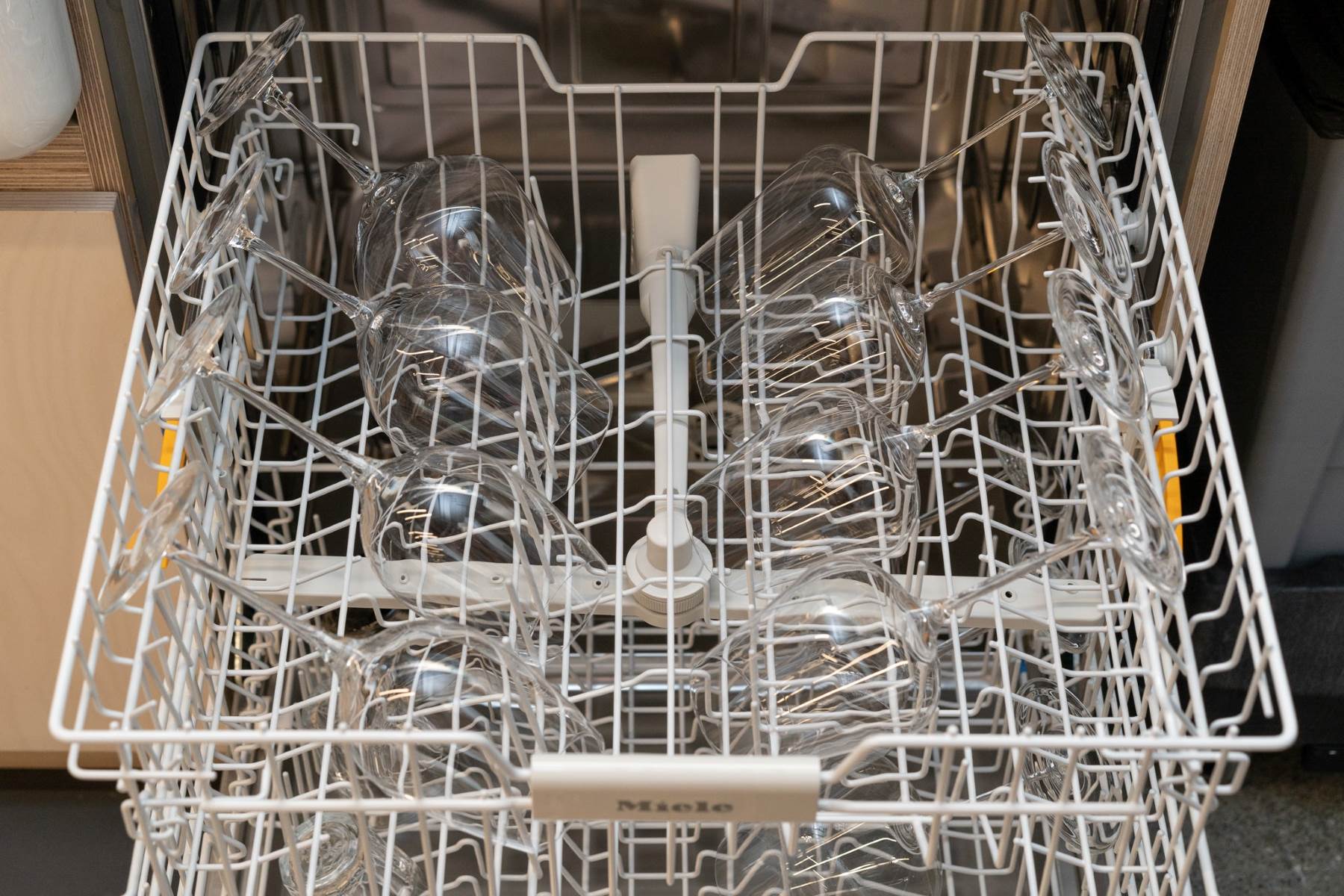

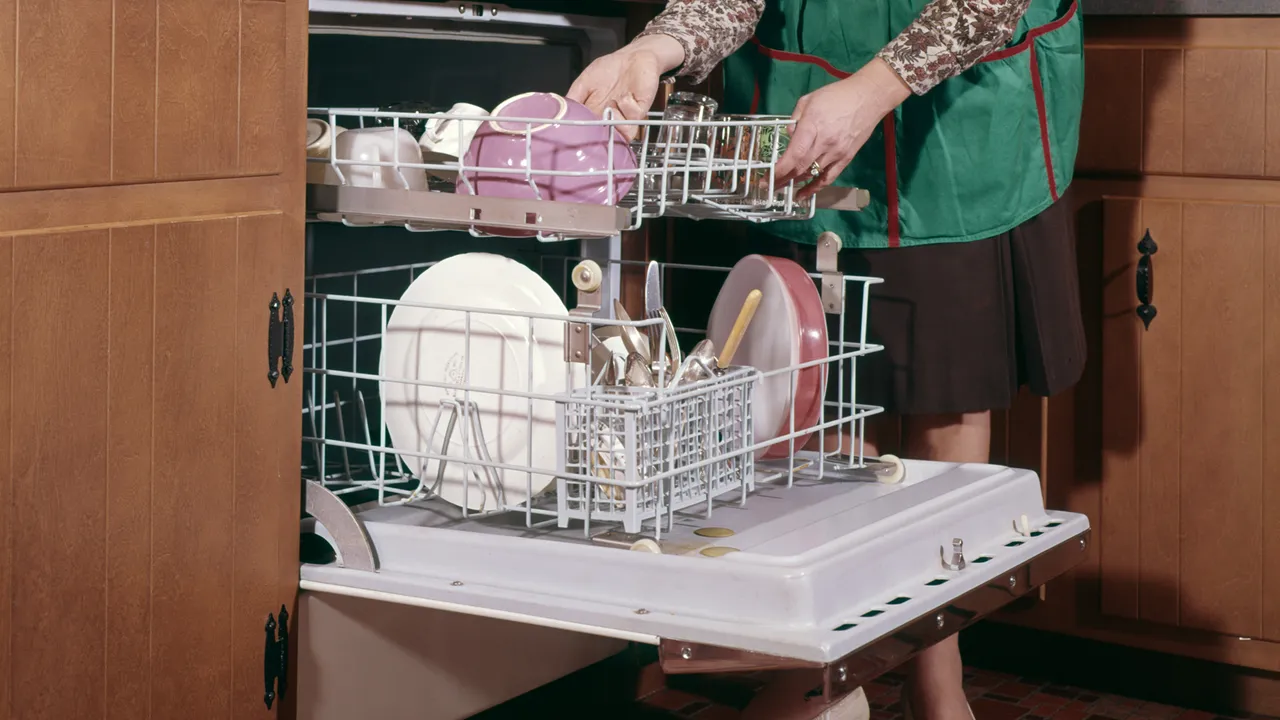





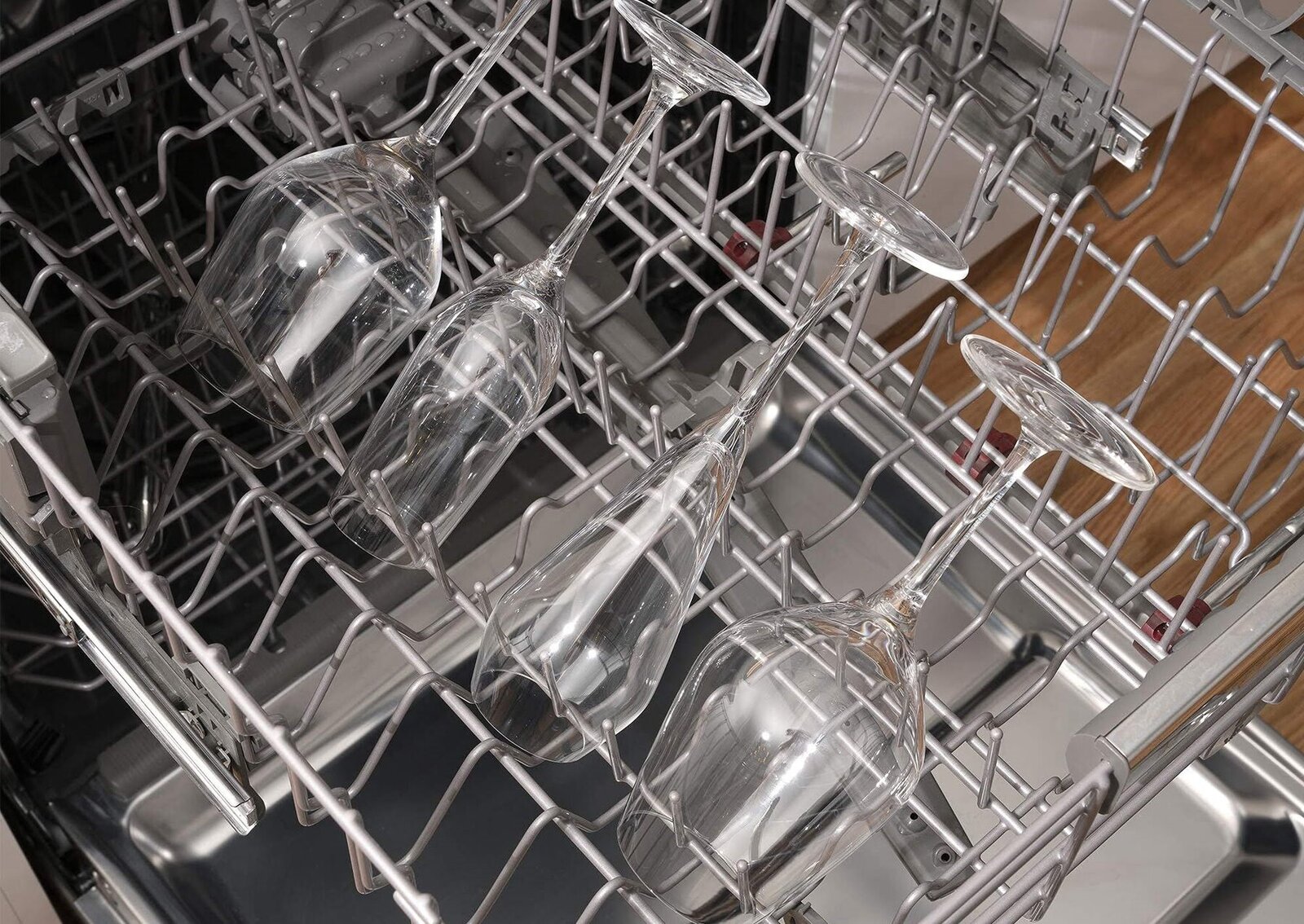
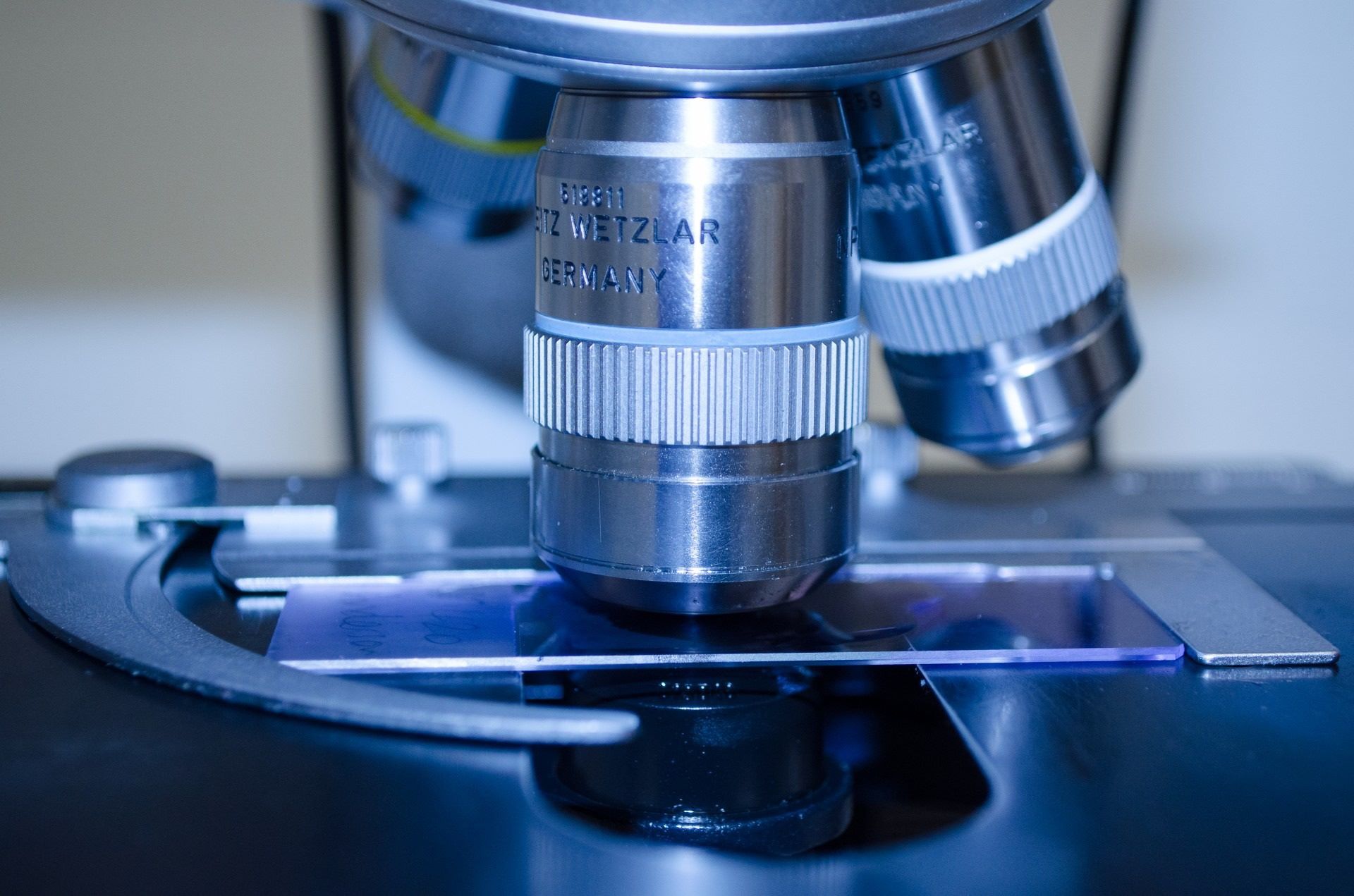





0 thoughts on “Where To Place Wine Glasses In A Dishwasher”